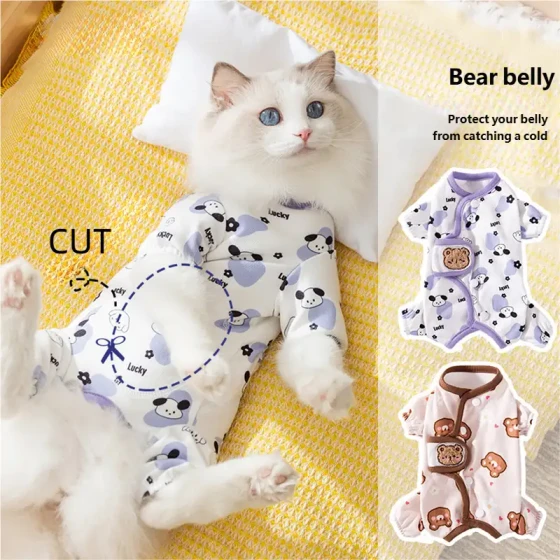What to Do If Cats Like to Bite_Correcting Biting Habits
Cats, these creatures wrapped in a mysterious aura, are sometimes gentle and well-behaved, and sometimes transform into "little tigers," using their teeth on our hands and feet. If you are troubled by this and want to know how to correct your cat’s biting habit, the core idea can be summed up in one sentence: Give up punishment, understand the motivation behind their behavior, and resolve it through environmental improvement, behavioral guidance, and establishing correct interaction patterns.
Honestly, simply attributing a cat’s biting behavior to "bad habits" is somewhat one-sided. There are often deeper reasons behind it; it could be driven by their nature, emotional expression, unmet needs, or even signals of physical discomfort. Simplifying a complex issue will only lead you further off track in solving the problem. Understanding this allows us to truly help them effectively, rather than just trying to "suppress" this behavior.

So, why do cats bite? It’s like detective work — first, you have to figure out the motivation:
- Play Aggression: Especially common in kittens and young cats. They are learning hunting skills and mistake your moving fingers and toes for prey. This is natural; they don’t truly want to hurt you, they just want to "play." If they don’t have enough suitable toys to expend their energy, or you always play with them using your hands and feet, naturally you become the best "prey."
- Fear/Defensive: When cats feel scared, threatened, or have nowhere to hide, they may bite to protect themselves. For example, in unfamiliar environments, being forcibly held, or being treated roughly.
- Pain/Discomfort: If your cat suddenly starts biting or bites when you touch certain areas, it may be telling you: "I’m in pain!" This is a cry for help and must not be ignored. Conditions like arthritis, dental problems, or internal diseases can make them sensitive and irritable.
- Overstimulation: Sometimes when petting a cat, they suddenly bite you, commonly called a "love bite" or "petting-induced aggression." This isn’t because they don’t love you, but because prolonged, monotonous petting causes sensory overload, much like humans becoming uncomfortable when tickled too long. Their tail flicks, rippling skin, dilated pupils are all signs of overload.
- Attention Seeking: Cats are smart; if they discover that biting immediately gets your reaction (even screaming or pushing away), they learn this is an effective way to get attention. Even negative attention is better than being ignored for them.
- Redirected Aggression: Cats see birds, another cat, or things outside the window that trigger their hunting or defensive instincts but cannot reach them. Frustration may cause them to redirect this emotion and aggression onto people or objects nearby.
Understanding these underlying reasons shows that simple, rough punishment is ineffective and even harmful. Hitting, spraying water, or confinement may temporarily scare cats away but do not solve the root problem. Instead, they damage trust between you and your cat, causing confusion, fear, or even increased aggression or more hidden problem expressions. Modern animal behavior science generally recognizes that punishment-based methods have minimal long-term effect and carry high risks.
So, how should you properly guide and correct this behavior?
Step 1: Rule Out Medical Issues
If biting behavior is a sudden change, especially accompanied by other symptoms (loss of appetite, depression, hiding), or if you suspect your cat feels pain when touched in certain spots, take your cat to the vet immediately. This is the most important first step; any behavioral intervention should follow ruling out medical reasons.
Step 2: Identify and Address the Cause
- If the cause leans toward “Play Aggression”:
- Provide plenty of suitable toys: Prepare at least three types of toys: chase toys (wand toys), "killable" toys (plush toys), and self-play toys (small balls, springs). Focus on interactive toys like wand toys, with at least two quality play sessions daily, 10-15 minutes each. Simulate the hunting process: let the toy "escape," let the cat "chase," "pounce," and "kill" (allowing them to catch and bite the toy a few times).
- Never use your hands or feet directly to play: No matter how small or cute, using your hands or feet as toys trains them to see those as prey. When they pounce or bite, immediately stop interaction, and you can even briefly "isolate" (walk away or leave the room for a few seconds) to let them understand biting ends the game.
- Distract their attention: When a cat jumps to bite your hands or feet, don’t scream or pull back (this mimics prey and further stimulates them), instead freeze or immediately throw an appropriate toy to redirect their biting to it.
- If the cause leans toward “Fear or Defensive”:
- Respect the cat’s space: Provide plenty of hiding spots (cat beds, boxes, high places).
- Avoid forcing: Do not forcibly hold cats or put them in uncomfortable situations. Learn to recognize their discomfort signals (flattened ears, puffed fur, hissing), and immediately stop actions that make them uncomfortable.
- Gradual acclimation: If you need to perform disliked operations (clipping nails, giving medicine), use positive reinforcement with treats and praise, starting with short, low-intensity contact.
- If the cause leans toward “Overstimulation”:
- Learn to read the cat’s body language: When you see dilated pupils, rapid tail flicking, tense body, flattened ears, skin ripple on back, immediately stop petting.
- Keep petting sessions short and frequent: Some cats prefer brief closeness rather than long periods held in arms.
- Find their preferred petting style and areas: Most cats like scratches on the chin, behind the ears, and cheeks, rather than the belly or back.
- If the cause leans toward “Attention Seeking”:
- Ignore bad behavior: When cats bite to get your attention, immediately give them complete ignore — stop interaction, look away, or briefly leave the room.
- Reward good behavior: When they quietly stay next to you or rub you properly, immediately give attention, praise, or treats. Teach them that gentle and calm behavior gains your positive response.
- If the cause leans toward “Redirected Aggression”:
- Identify and remove or isolate the trigger: If your cat becomes agitated by something seen outside the window, consider blocking the view or limiting their window access at certain times.
- Provide other outlets for energy release: Play with interactive toys before redirected aggression can happen to expend their energy.
Step 3: Environmental Enrichment
A boring, oppressive environment is a hotbed for behavioral problems. Providing your cat with an interesting, challenging, and instinct-satisfying living space is crucial. This includes:
- Vertical spaces: Cat trees, wall shelves allowing climbing and high observation.
- Scratching posts/pads: Provide different materials and shapes to satisfy scratching needs.
- Hiding spots: Boxes, tunnels, cat beds.
- Interactive and puzzle toys: Food-dispensing balls, track balls, allowing cats to gain food or fun while playing.
- Perches by windows: Allow cats to observe the outside world.
An enriched environment keeps cats happy mentally and physically, reducing biting caused by boredom, anxiety, or excess energy.
Step 4: Patience and Consistency
Behavior change takes time and patience. Especially for cats with entrenched habits, correction may take weeks or even months. Household members should maintain a consistent approach to avoid confusing the cat. Don’t expect instant results; every correct guidance helps them learn new interaction patterns.
Finally, remember every bite is a cat trying to communicate with you. Rather than getting angry, try to understand what it wants to say. By deeply understanding your cat’s behavioral language and psychological needs, you not only solve the biting problem but also build a healthier, more harmonious human-pet relationship. Isn’t this far more valuable than simply making them “not bite”?



